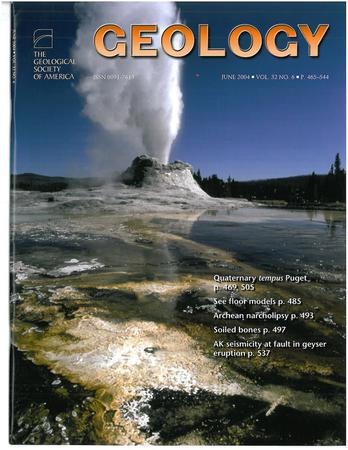西格陵兰 Vaigat 海峡全新世巨型岩崩--对地质灾害的启示
IF 4.6
1区 地球科学
Q1 GEOLOGY
引用次数: 0
摘要
最近在格陵兰岛和阿拉斯加发生了岩崩引发的位移波(也称为海啸),这说明极地地区存在这种危险。为了更好地了解这种灾害对这些地区的影响程度,我们研究了影响瓦伊加特海峡(格陵兰岛西部)部分封闭水体的千兆级亚高空岩石崩塌。我们展示了一个新的次冰期至全新世数字高程模型,以及一份新的地震数据汇编,其中揭示了九个冰期至全新世岩崩群,这些岩崩群比附近历史上的岩崩群大一到两个数量级。最大的三个岩崩群的沉积厚度达 300 米,冲出距离达 19 千米,最佳估计体积为 1.7 至 8.4 千立方米。根据其形态和体积-到达角度的关系,每个综合体都可能是一个或几个事件,从而使它们成为地球上产生最大位移波的陆下至海底岩崩之一。我们估计对岸的位移波最多可达 280 米。沉积物的年龄很难确定,但主要的岩崩活动可追溯到全新世早期。由于预计北极地区的气候将发生重大变化,我们建议在进行危险评估时,不仅要考虑历史记录中的事件,还要考虑近期地质历史上的事件。本文章由计算机程序翻译,如有差异,请以英文原文为准。
Holocene gigascale rock avalanches in Vaigat strait, West Greenland—Implications for geohazard
Rock avalanche−triggered displacement waves (also termed tsunamis) have recently occurred in Greenland and Alaska, and they illustrate the presence of such hazards in polar regions. To improve understanding of the magnitude of this hazard for these areas, we investigated gigascale subaerial rock avalanches impacting a partially confined water body within the Vaigat strait (western Greenland). We present a new combined subaerial to subaqueous digital elevation model, alongside a new compilation of seismic data, which revealed nine deglacial to Holocene rock avalanche complexes that are between one and two orders of magnitude larger than nearby historical rock avalanches. The three largest complexes have deposit thicknesses up to 300 m, runout distances reaching 19 km, and best-estimate volumes from 1.7 to 8.4 km3. Based on the morphology and the volume−angle of reach relations, it is likely that each complex represents a single or few events, thus making them among the largest displacement wave−generating subaerial to submarine rock avalanches on Earth. We estimated displacement wave magnitude up to 280 m on the opposite shore. The ages of the deposits are poorly constrained but the main rock avalanche activity is referable to early Holocene times. With significant climatic changes predicted in the Arctic, we recommend that hazard assessments account for events not only from the historical record but also those from the recent geological past.
求助全文
通过发布文献求助,成功后即可免费获取论文全文。
去求助
来源期刊

Geology
地学-地质学
CiteScore
10.00
自引率
3.40%
发文量
228
审稿时长
6.2 months
期刊介绍:
Published since 1973, Geology features rapid publication of about 23 refereed short (four-page) papers each month. Articles cover all earth-science disciplines and include new investigations and provocative topics. Professional geologists and university-level students in the earth sciences use this widely read journal to keep up with scientific research trends. The online forum section facilitates author-reader dialog. Includes color and occasional large-format illustrations on oversized loose inserts.
 求助内容:
求助内容: 应助结果提醒方式:
应助结果提醒方式:


